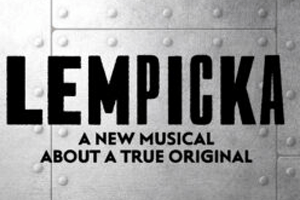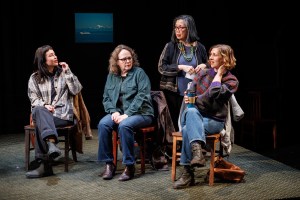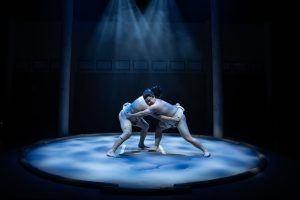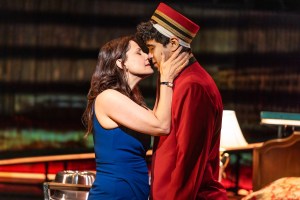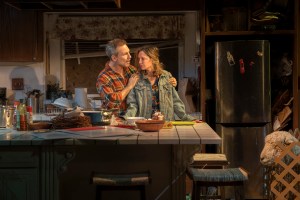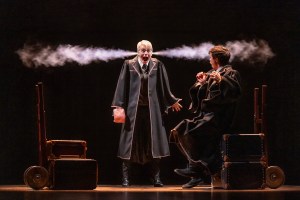Interview: The Making of a Queer, Art Deco Love Story in New Broadway Musical Lempicka
Writers Carson Kreitzer and Matt Gould and director Rachel Chavkin discuss this new production inspired by the life of artist Tamara de Lempicka.
The new musical Lempicka at the Longacre Theatre is a big swing this season. One of 16 productions opening in April, it’s the rare show that’s not based directly on a previous piece of intellectual property, and while it is a bio-musical, it’s about an artist whose life and work is not quite well known. The central figure was remarkable, nonetheless: Tamara de Lempicka was a Polish artist who fled Russia during the Revolution, settled in Paris where she became known for her Art Deco nudes and portraits of the aristocracy, and courted controversy due to her sexual relationships with men and women.
In short, Tamara’s life was ripe for musicalizing, as writer and conceiver Carson Kreitzer discovered while flipping through a book of her artwork. Meeting composer Matt Gould, Kreitzer found a perfect partner in music, and with director Rachel Chavkin completing their triumvirate, they’re now on Broadway after 16 years of development and regional runs at Williamstown Theatre Festival and La Jolla Playhouse.
It was a long, winding path, but they’re not deterred. Like their protagonist, they set out to make something new, and they’ve done it.
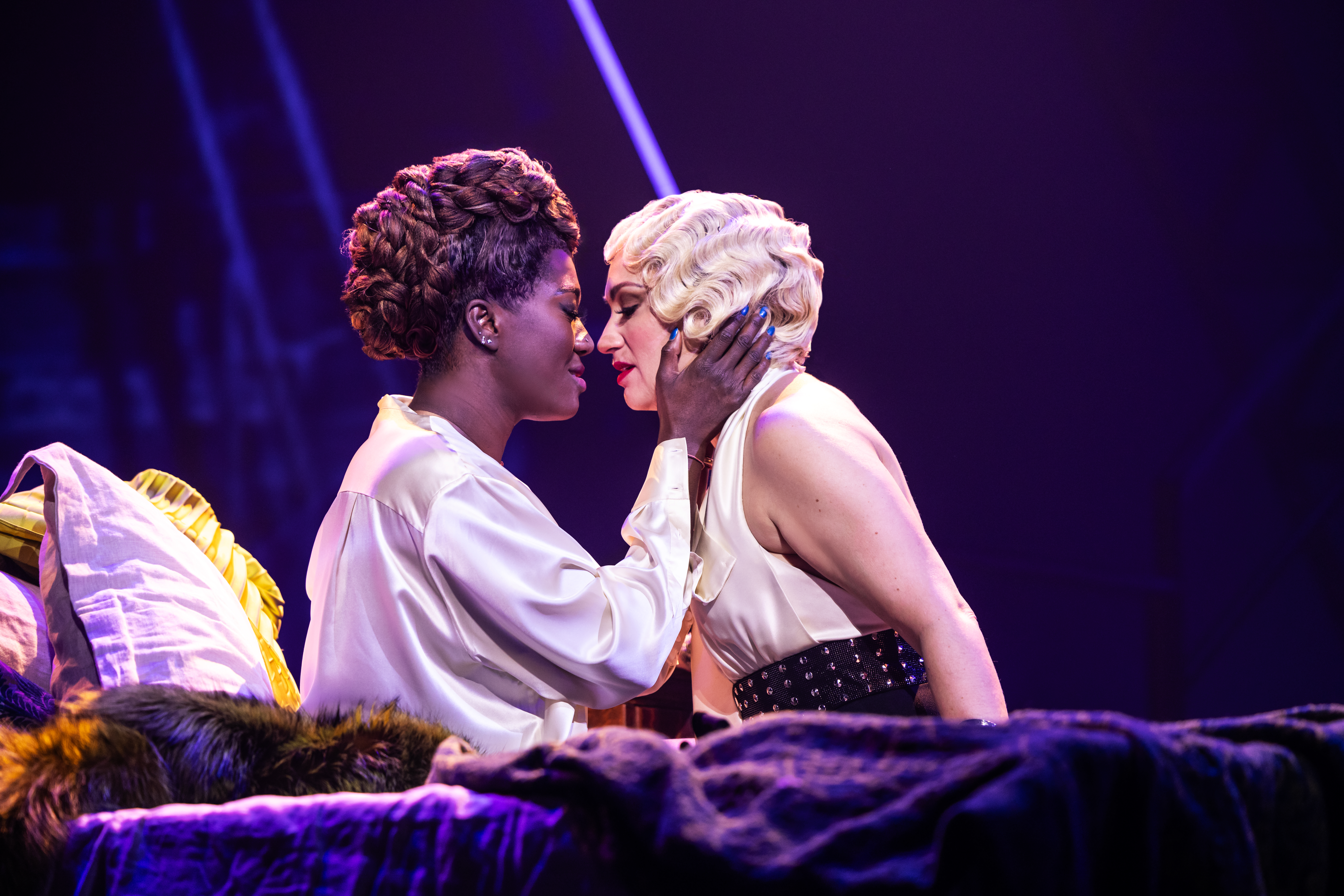
(© Matthew Murphy/Evan Zimmerman)
This conversation has been condensed and edited for clarity.
Carson, what made you think that Tamara de Lempicka’s story was musical?
Carson Kreitzer: When you look at her art, it’s so crystalline and the colors are so bold. The humans are the drama. This is a world of larger-than-life people, a world of extreme color and clarity. It has to sing. It has to be bigger than a play. I had this idea 16 years ago when I was still in grad school, and I did not know what the sound of the show should be until I met Matt Gould at the composer-lyricist studio at New Dramatists. We wrote one song together and I was like “This is it.”
Matt, I’ve been describing the songs as the “club remix” version. Can you tell me about your influences and what you were trying to do?
Matt Gould: The goal was always to make the modern-day version of what Tamara’s world would sound like. For me, good musical-theater is all about juxtaposition and tension. It’s what Tamara’s art does. It shows you this very cool, clean veneer but on the inside, those humans are going through something extreme, and you can see in their eyes that they’re dealing with the fear, horror, joy of life. To me, that makes the artwork want to sing. When you read Carson’s writing, she’s very specific and discerning. When I was met with the heightened poetry of Woman is this, Women is that, it could be a little art song, but the language needs to be pulled to the opposite extreme, which as you said is the remix version. And sometimes it’s the chamber music version, where we do drop into the simplicity of beautiful language that needs to be set like a jewel.
Rachel, how did you develop the aesthetic of the physical production?
Rachel Chavkin: We were looking at her work from the very beginning. The challenge I faced, and the challenge Riccardo Hernandez, our incredibly set designer, faced, was logistical. The play has to be everywhere. We have to go from Russia to Paris in the span of a song. We have to go from the 1937 expo to Tamara’s home, to her studio with Rafaela in the span of eight measures. It immediately felt clear that there was no realistic version of this set for the theater. Riccardo had very strong constructivist impulses rooted in the Russian, and then it felt like it was lacking some of the femininity of Paris and those winding staircases that I have made out along, and certainly Tamara did. So, this idea of a jungle gym that is essentially this deconstructed Eiffel Tower and the beautiful black iron of Paris ultimately felt like the right home.
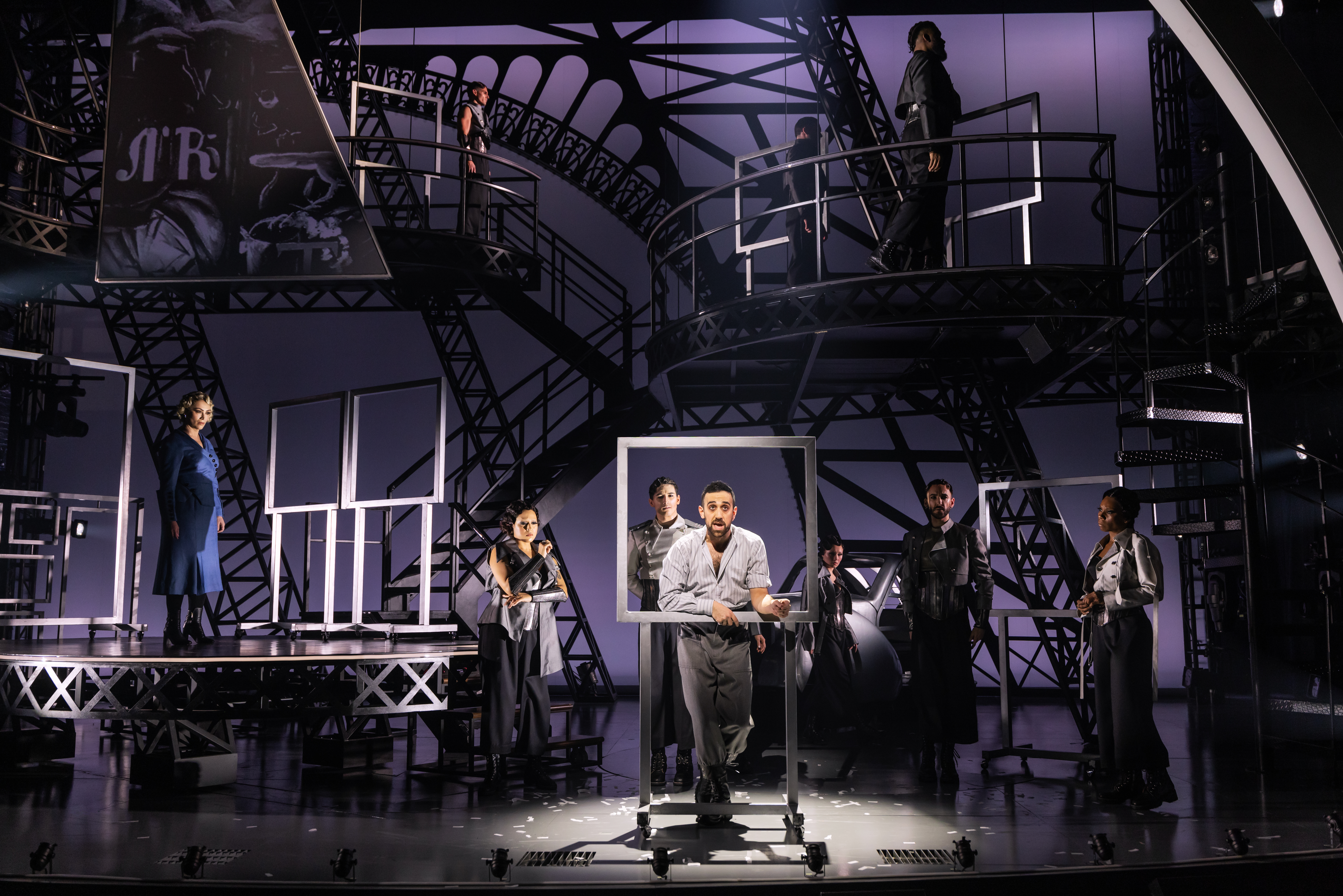
(© Matthew Murphy/Evan Zimmerman)
A lot of your actors have been with you for a very long time over the course of its development, and it seems more important to them than your average Broadway show. Why do you think that is?
Rachel: There are a couple of reasons. I want to lift up Natalie Joy Johnson [who plays Suzy Solidor] in particular. She’s the greatest audience member we could ever hope for. She loves the show and weeps during the show and has laughed with the show since the beginning. She’s emblematic of the many ways that the show strikes people. We have a huge component of our company that is queer, which is not unusual in the theater. But it is very rare to find a queer love story at the heart of an epic musical, and while it’s not exactly a happy ending for Tamara, queerness is not the root of the tragedy, as is so often the case in drama. I think that’s one big part of it. And there’s something about the architecture of Carson’s language and the soaring of Matt’s music that does satisfy the musical-theater baby in so many of us. It gives us the territory to skip and fly, and that is exhilarating.
Why is it Beth’s character that gets the emotional 11 o’clock number in the show? It’s very unexpected.
Rachel: There’s something about the grief of an artist who wants to live in a moment forever, and the reality is that time doesn’t work that way. That’s the emotional core of the show, which is what Beth Leavel’s late act two number says. Tamara is shattered and the Baroness comes in and is trying to wrestle with her own pain and simply says that she has to keep working. The world’s on fire and you just have to keep going because that’s what you do. That’s something that resonates with artists very deeply.
Carson: The Baroness, in this moment, is the one who has more wisdom than our central character. She has lived more and has something that Tamara needs to get to the next place. Part of the way it operates is that it is a surprise. You don’t expect this character to suddenly come to the fore, to stop everything and make everyone listen to her perspective.
Rachel: It’s worth observing that the Baroness did die of Leukemia in real life and was sadly never painted, which is something that Beth and I have talked about. It’s part of her final beats in that number. The moment evolved a great deal. It really was just a solo, and as it became about the Baroness speaking to Tamara about the necessity of trying to preserve a life, which is what a portrait painter does at the core, the number not just became integral to the show, but became emotionally destructive because it was so bound up with the journey of our central character.
What is it like to be here today, on Broadway, after nearly two decades of development?
Matt: I’ve been thinking a lot about the fact that we are here today not because Tamara de Lempicka was rich and famous. Most people don’t know how to say her name still. We’re here today because somebody 100 years ago set out to make something new.
Carson: In the show, we’re wrestling with the question of “Can you make the world stop?” No, you can’t. But you can make this one thing that, 100 years later, will bring together a collection of artists working their asses off to bring this story to life again.
Matt: We feel the gravity of the legacy that we are a part of.


